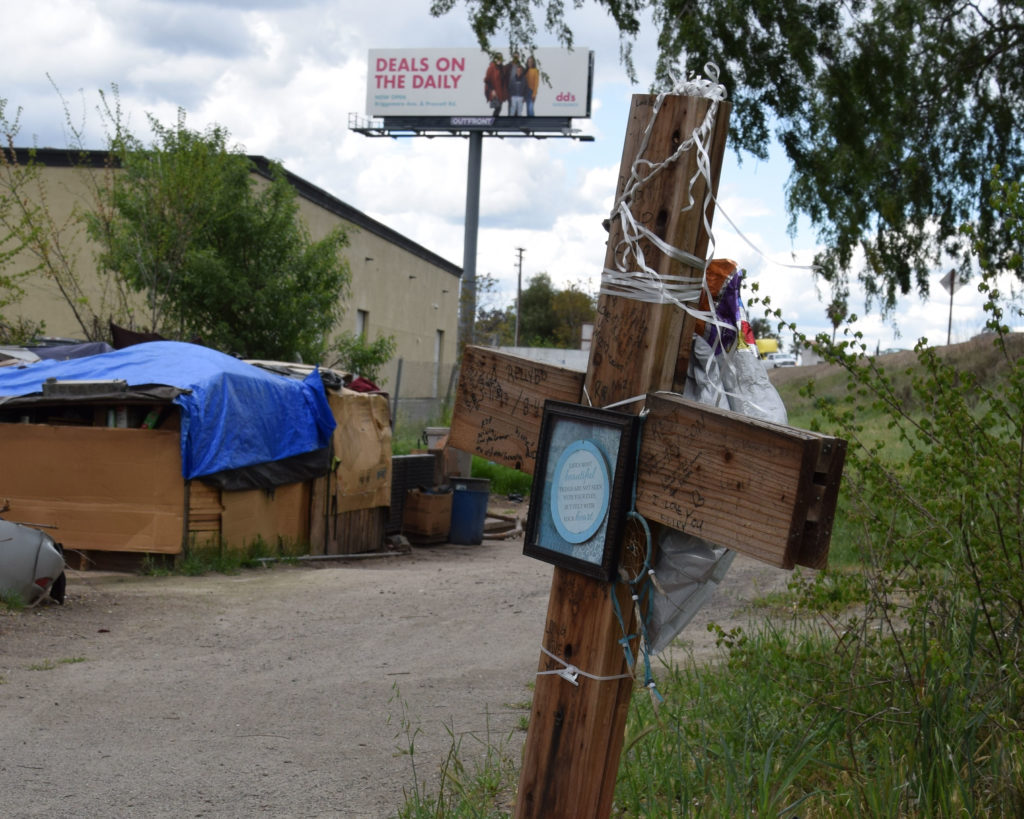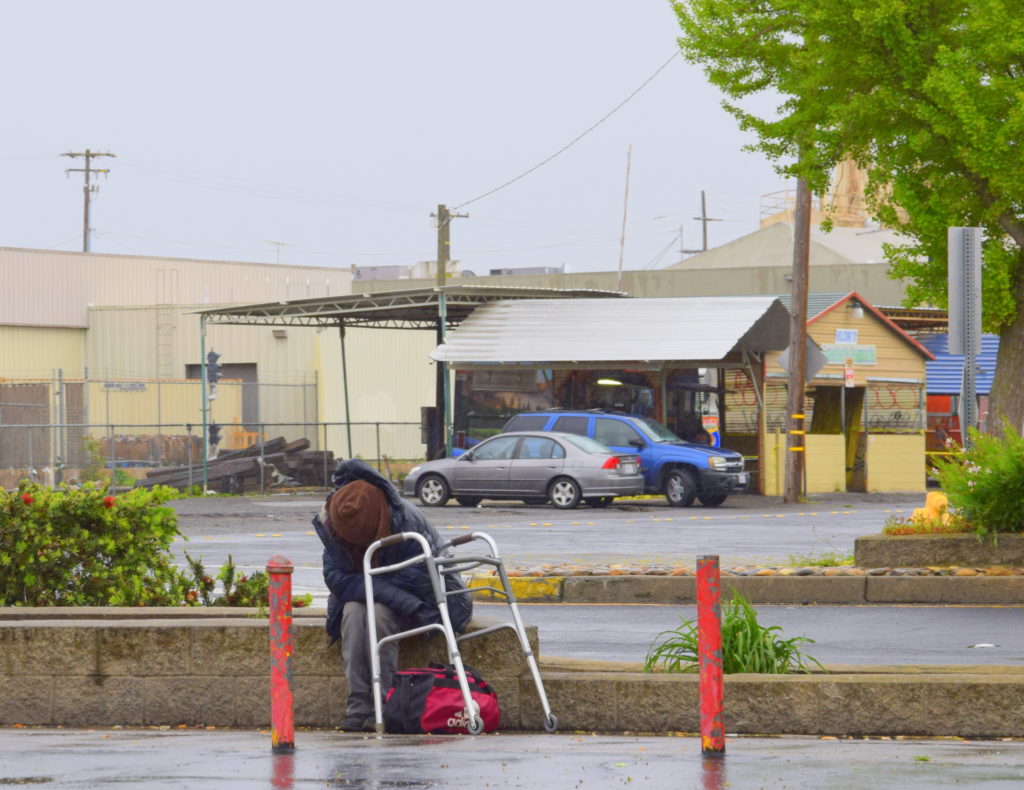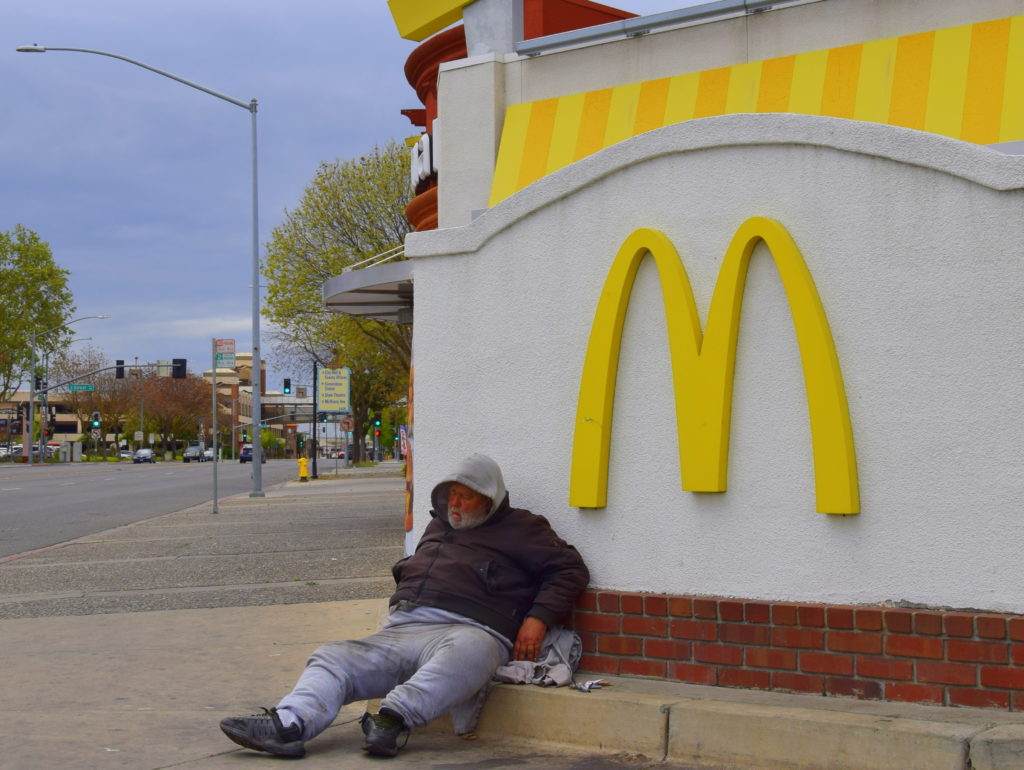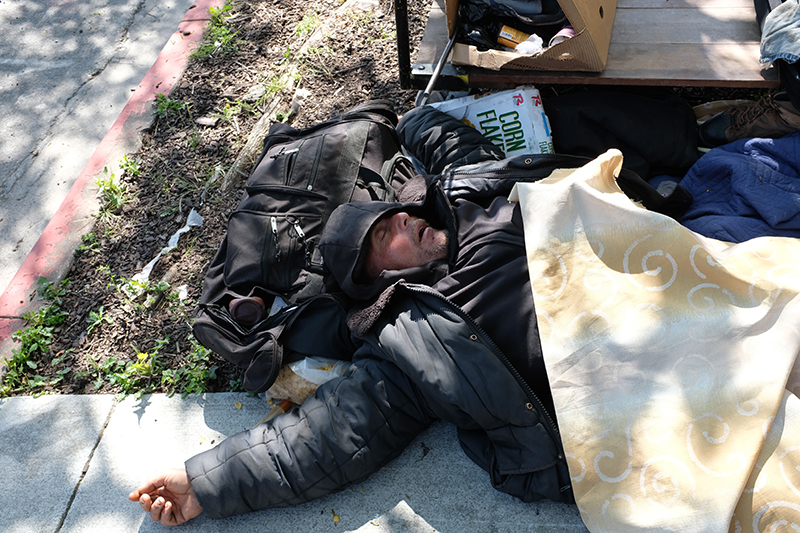And Jesus knew their thoughts, and said unto them, every kingdom divided against itself is brought to desolation; and every city or house divided against itself shall not stand
Our New Normal
Just a little over eleven years after George W Bush signed the $700 billion Emergency Economic Stabilization Act to save banks and financial institutions from defaulting on mortgage backed securities, the Trump administration is into a second round of trillion dollar expenditures to prop an economy near ruin from a pandemic that caught the richest nation in the world in a maelstrom of unready ignorance and divisive rancor.
In what has now become a daily reality show, New York Governor Andrew Cuomo and President Donald Trump exchange barbed insults about who should be responsible for the nation’s woeful lack of PPE, testing capability, and late reaction to the advice of health care professionals. Meanwhile, the west coast seems to have benefitted immensely from prompt and decisive action by governors like Gavin Newsom and Washington’s Jay Inslee.
But even under best-case scenarios, the economic devastation from a nation-wide shutdown will almost certainly persist well after Covid-19 has been subdued. And while a traumatized nation hopes for a return to normal, it would behoove citizens everywhere to reflect on what “normal” has come to mean.
Government has now come to the rescue of our economy in the last three presidential administrations. In every case, the bailout has disproportionately benefitted the wealthiest among us. The last bailout, a combined effort by the Bush and Obama administrations, resulted in a sustained economic expansion that continued unabated into the Trump presidency and contributed to a succession of record highs in the stock market.
Nonetheless, even with low unemployment and a booming stock market, the “normal” for the past decade included rising numbers of homeless people and higher percentages of people a car repair or medical bill away from insolvency. It also included more members of the “precariat,” people who lack job and financial security because their work is intermittent/seasonal, dependent on “gig” jobs, or non-essential.
Another, lesser recognized feature of the new “normal” economy has been cities and counties on the verge of bankruptcy. Even during California’s booming economy, which featured record production in technology and agricultural sectors, cities like Stockton, Vallejo, and San Bernardino declared bankruptcy, while other cities balance their books only with severe cutbacks in services. City mayors in Stanislaus County have been pushing to reopen business because they fear they will soon be unable to provide basic services.

Modesto, a typical San Joaquin Valley town, manages to stay solvent only by maintaining what amounts to a skeleton crew on its police force and by foregoing much-needed maintenance of its urban forest, among other cutbacks. On weekends, especially during the current shutdown, there are as many unsheltered people on its downtown streets as sheltered, and on any given morning sidewalks, doorways and allies are strewn with the slumbering bodies of the destitute.
For Modesto, a return to “normal” would still mean inadequate public services and safety. It would mean resumption of its “accountability” policy for the homeless, a program that shoos homeless people from place to place around the town and county while occasionally issuing tickets and assigning jail time to obstreperous offenders. That program will almost certainly have to be modified by the likelihood of having to deal with viral infections long after a return to business as usual and by an almost certain rise in homeless numbers due to the damaged economy.
Even after California manages to get the most vulnerable homeless people into hotel and motel rooms—a Herculean task that has gotten off to a stumbling start—tens of thousands will remain outside. At best, the state has arranged for approximately 15,000 hotel and motel rooms for a homeless population about ten times that number.
The housing shortfall will be even more critical as more people become homeless, a virtual certainty now that millions have been thrown out of work. Among those millions, stunning numbers were a paycheck or two from inability to pay the rent, even during boom times.
In Stanislaus County, where records have been routinely set for agricultural production over the last ten years, a staggering 40% of households in 2017 were below the United Way’s Real Cost Measure, a metric for income enough to meet essential costs such housing, food, transportation and health care. In the aggregate, the billions of state and federal dollars on the way to provide help sound like lots of money, but the people receiving their $1200 dollar checks who are looking at months of unemployment haven’t been reassured.

According to a well-established narrative, homelessness and poverty are character flaws resulting from a lack of ambition, sloth, and dependence on government handouts. In fact, 98% of Stanislaus County’s households below the Real Cost Measure have at least one working adult. The root problem in Stanislaus County and elsewhere throughout the nation is that even as the real value of wages declined, wealth became concentrated in fewer and fewer hands.
Of the world’s industrialized nations, only in the United States does the richest one percent own more than 28% of national wealth. Here, the richest one percent own 42.5% of the nation’s wealth. Not surprisingly, people who live in nations with extreme wealth inequality are also less healthy than people in nations with more equal wealth distribution.
Thus infant mortality, life expectancy, and mental illness are worse in the United States than in other countries—except for the very, very wealthy. Men in the top one percent of wealth distribution can expect to live 15 years longer than those in the bottom one percent; for those in the top five percent versus those in the bottom, the difference is twelve years.
The transference of extreme wealth inequality into grossly unequal health outcomes also means higher demands on health care and social services, but the Corona pandemic has shown that the United States, despite its great wealth, was unprepared for a health care crisis. And even before the arrival of the pandemic, social and health care services throughout the nation were overburdened by multiple demands, including a severe outbreak of addictions to opioids and a growing increase in mental illness.
Californians have become inured to bodies in the streets, encampments along roads and highways and Emergency Rooms full of destitute people. Before Corona, those realities constituted the new “normal” for millions of US citizens, but especially those in regions like the San Joaquin Valley. Is that the normal we wish to bring back?
Do we really wish to restore an economy that crashes and burns every few years, an economy that periodically pushes almost half the country over of a cliff and then tosses people a rope just long enough to pull them halfway back?

Ties that Bind
As part of the nationwide Coronavirus relief effort, Stanislaus County will receive $96 million dollars in federal funding to help offset the devastating economic effects of the pandemic. Stanislaus County Supervisor Terry Withrow has said, “I trust we will do all we can to put it back into the community to help businesses and industry hurt by the (coronavirus-related) shutdown.”
Some of that money will be used to shelter homeless people, but it will done over the complaints of Supervisor Jim DeMartini, who has already questioned expenditures for a hotel that will house homeless people during the Corona crisis:
“I question the assumption that this is needed. There has to be some limits on how much we spend on homeless programs.”
While there’s no question we need, “to help businesses and industry hurt by the shutdown,” and have, “limits on how much we spend on homeless programs,” the dollar amount it will take to achieve a semblance of economic stability will be far higher than $96 million. And there is going to be even more homelessness as the economy continues to reel from shutdowns, unemployment, and bankruptcies.
There is no better illustration of the fundamental problems that beset the nation than California and the San Joaquin Valley. Both have had booming economies since the Great Recession. The Valley has benefitted from an agricultural boom, the state from a booming technology industry.
Nonetheless, California leads the nation in total homeless numbers, and the Valley has higher average rates of homelessness and poverty than the state as a whole. Those who think our problems with homelessness and poverty are the result of the state’s liberal politics need to account for the poverty in red states, which routinely lead the country in poverty rates per capita.
Red states also receive much more federal assistance than blue states, with Virginia, Kentucky, New Mexico, West Virginia and Alaska in the top five for highest net federal funding per resident. California receives the lowest net federal funding per resident of all fifty states—it’s the red states that are most dependent on government handouts, not blue states like California and New York.

The root problems with poverty throughout the nation aren’t due to state politics at all. They begin and end with wealth inequality. The simplest way to understand it is to realize that when more of the nation’s wealth ends up in fewer hands, there is less wealth in more hands.
This simple economic reality has been shrouded in a mythology that even today enables us to deny the evidence of our five senses. In a landscape strewn with bodies on our streets, homeless camps under our bridges and along our freeways, long lines for giveaway food, and rising numbers of people living in precarious poverty, too many of us still believe money trickles down and the free market solves all problems.
But nothing signifies the peril that awaits us more than our divisiveness during a crisis that has already taken tens of thousands of lives and could sink the country into an extended economic depression. Instead of the unity that brought us together after 9/11, we have the president pitted against governors, red states versus blue states, and rural America against urban.
The real crisis is our failure to recognize that no matter our politics, religion, or economic status, we still share sidewalks, streets and highways. We share hospitals and Emergency Rooms. We share our schools, parks, sports arenas and airports. We share taxis, subways, supermarkets, convenience stores and gas stations. We share holidays like the 4th of July, Cinco de Mayo, and Memorial Day.
If the pandemic has shown us nothing else, it’s revealed a commonality we can’t escape. It’s shown us that humanity requires connections, community, and coming together. If we can’t unite during a pandemic, if our new normal features bitter division, burgeoning inequality, and an ever-expanding vista of dystopian desolation and despair for almost half our citizens, then what is the point of “getting back to normal”?
After 9/11, President George W Bush emphasized American unity when he said, “We do not fight Islam, we fight against evil.” The president in those times rejected division, hatred, xenophobia and fear in favor of community, tolerance, and faith.
Today, during another great crisis, we find a nation divided, with the poorest among us facing an even grimmer future ahead. Next year, will we still be dividing our people into haves and have nots? Will we say to the destitute former business people and retail employees that they should have worked harder and saved more, or will we remember our foundational values of hope, unity, and equality?
The people on our streets and sidewalks, under our bridges and along our freeways are part of a catastrophe that began before the pandemic and will be with us after it’s gone. If they remain fixtures of our future, America will lose its last claims to greatness and descend into an economic mire we once associated with communism and totalitarian governments.
The test of our progress is not whether we add more to the abundance of those who have much, it is whether we provide enough for those who have little. Franklin Delano Roosevelt

It is definitely time to invest in lifting up the homeless. We need to invest in long term programs that will address the issues that have made them homeless in the first place.
Great message…
Another expertly written piece by this author that very accurately describes a problem we all witness but that offers no real solutions to these conditions he describes.
An economist might argue that these discrepancies this piece addresses are not so much a failure of government programs but of the one thing that does “equalize” all Americans; Our educational systems, What has happened in the last ~20 years that has brought all these poor souls to these depths of despair? Could it be the advent of the Public Sector Labor Unions in our schools?
Why not allow the market to correct these imbalances, naturally? Why not allow the parents of each student the resources to freely choose the best means to educate their child in the selection of any accredited school in their area, regardless of affiliations, by means of a ‘voucher’ amount predicated by the amount now spent by their state on education on a per student basis. Let the ‘market’ determine teacher compensations too as we all know already that good~excellent teachers are grossly over-paid. One advantage of this system is that students will flock to the best managed schools offering the better outcomes for their students; There is nothing then to limit salary levels for the ‘best’ teachers.
Yes, there is tremendous wealth in this country, a good portion of it is generated by capital invested from abroad as this is the one place in the world where everyone has an equal chance to become obscenely wealthy!
It does not matter who your father is or where, or under what circumstances, you were born; It only matters that you are able to save a little money to get started, that you work hard and invest wisely. Thing is, we do not teach this in our schools; One should wonder why that is…
Sure, there are some that are too ill to care for themselves but that is a relatively easy problem to address. Remember what some smart dude said; “Socialism is a plan of morally sanctioned theft. It is about dividing up what others have created.” If we want to be ‘free’ and allowed to be creative and innovate, the system we have does that and beats the hell out of the alternatives!
R.T. Losh
Why?
You bring up some valid points about educational reform (and I would add that ineffectual administration is as much to blame as labor unions). Also, I think you meant to say that “good-excellent teachers are grossly underpaid”? Your argument makes more sense that way. I agree that “free markets”, when properly defined, can be a powerful force for change.
Anyways, I must disagree with your wholesale discounting of “socialism” (at least that’s how I’m reading your words). We are a social democracy and even school vouchers would be a “socialist” concept. As the author points out, the current pandemic is laying bare many weaknesses in our economy, many of which can be traced back to ‘not enough’ social supports (as opposed to ‘too much’, which also can happen).
R.T.:
You have added some good comments that expand on the complexity of the national homelessness issue. Mr. Caine’s short essay certainly can’t cover all aspects of homelessness.
But your “as we all know already that good~excellent teachers are grossly over-paid” statement contradicts my observations while my wife and I were helping enrich science education at several local elementary schools such as Salida Elementary School. Have you personally observed teachers like Mike Oakes, Lorraine Freeland, Georgia Simvoulakis and Tony Iafrate at Salida, or high school teachers Dr. Dave Menshew, Katie Merenda, Chris Guptil and Jim McCarthy, all outstanding teachers I have met and admire. They give oh so much than in-class teaching. And I have met hardly any local teachers. Have you met any of these teachers?
When I think of “overpaid,” I think of the average CEOs of the US whose pay packages are currently 278 times the pay of their average worker.
Thanks to RT, a portion of our federal assistance money will be spent handing out school vouchers to homeless people. Some may call it morally sanctioned theft, but we have found the more money people get, the more they want, so we hand out more to those who have the most and they wisely use portions of it to buy government. It’s win/win for the fortunate few. We doubt people will be able to buy much with their vouchers, but perhaps they will feel at least a bit enlightened. Also, as our most current winner of the Ignoratio Elenchi Award, RT will receive a lifetime supply of Lysol and Kool Aid chasers.
Mr. Caine has laid bare the underbelly of the US and it is true he offers no explicit solution but does hint that a change of leadership across the board will be necessary if meaningful change is to occur.
I think one has to look at policy at all levels and recognize that policy is typically derived via legislation produced by elected representatives and implemented by bureaucrats. As we are well aware, elected officials can be heavily influenced by money and thus are beholding to those wielding power.
Organized labor of course is just one of the stakeholders in this arrangement. To make the claim that public labor unions are the blame for educations demise in the last 20 years doesn’t hold up in my understanding of the complexity of education. Education takes place in a social setting comprised of families, neighborhoods, faith based organizations, employers, social services, government, educational institutions, and of course labor unions. All these entities interacting create the environment for ‘education’.
Education can’t be the “great equalizer” when there are so many variables involved as the overall educational systems in each jurisdiction aren’t equal. E.g. property taxes provide much of the funding and as such impoverished areas spend much less per student than more well to do communities.
And “Free Markets’\” only exist in text books, but Socialism is real for corporations; but not so much for individuals. How many billions was that again that corps got in tax breaks?
To see how other countries education systems are ranked see: http://ncee.org/what-we-do/center-on-international-education-benchmarking/top-performing-countries/
Perhaps we can learn from them versus blaming unions and espousing free market solutions.
Send DiMartini or anyone else to me so they can shadow me for 1 month and maybe they will see, it’s not that we spend money on the homeless, but it’s how we spend money on the homeless. We think we know what another person needs based on our own cognitive bias and our own cognitive dissonance. Watching other humans suffer close up is no joke. If only I had the power to give everyone the gift of clear vision. The people I served as a caseworker in a homeless shelter had tragic and varied stories even before they became homeless. If you think your life was rough and you were able to avoid this way of life, thank what or whoever you revere. Walk side by side with those who suffer most in our community and you may find that it’s those who watch with limited knowledge and righteous condemnation that are a huge piece of the puzzle. Instead of questioning why we spend money on the homeless, one could easily question why we allow those in charge to mismanage and misallocate funds for those who suffer. A skeleton police force can not control drug dealers and inadequate rehab centers and limited beds do nothing but set people up for failure. We command the most traumatized, addicted, mentally ill and underserved to heal themselves. Does your mechanic make you fix your own car? If 10% of our homeless wanted to get clean, there arent 150 rehab beds open or even available to them. I’ve heard there is one psychiatrist for all of the medical patients, one! Even if you want to hold our suffering responsible for their entire demise, how long does it take to fix your life after years of homelessness? Our societal opinions differ greatly as to what is considered successful, so whose standard do we use. There is a lovely creamy center that sits in between enabling and abandonment, meet us there wont you all? We could really use the help. If you cant help the suffering, then maybe help those who help those who suffering by making sure we have the resources WE KNOW we need in order to make the world happy about the money they spend on those we serve. I personally will no longer lose sleep over why people feel the way they do about people they know very little about. I lose enough sleep trying to figure out ways to keep those I serve a little happier, a lot healthier and totally loved each day!
How do you wash your hands without a sink? Stock up on food without money? Or shelter in place when you live on the streets? Charities in the Italian capital are struggling to respond.
“The delivery meals have increased, because the demand has grown, but they are also a way to let people know that they haven’t been abandoned,” Ms. Zuccari said.